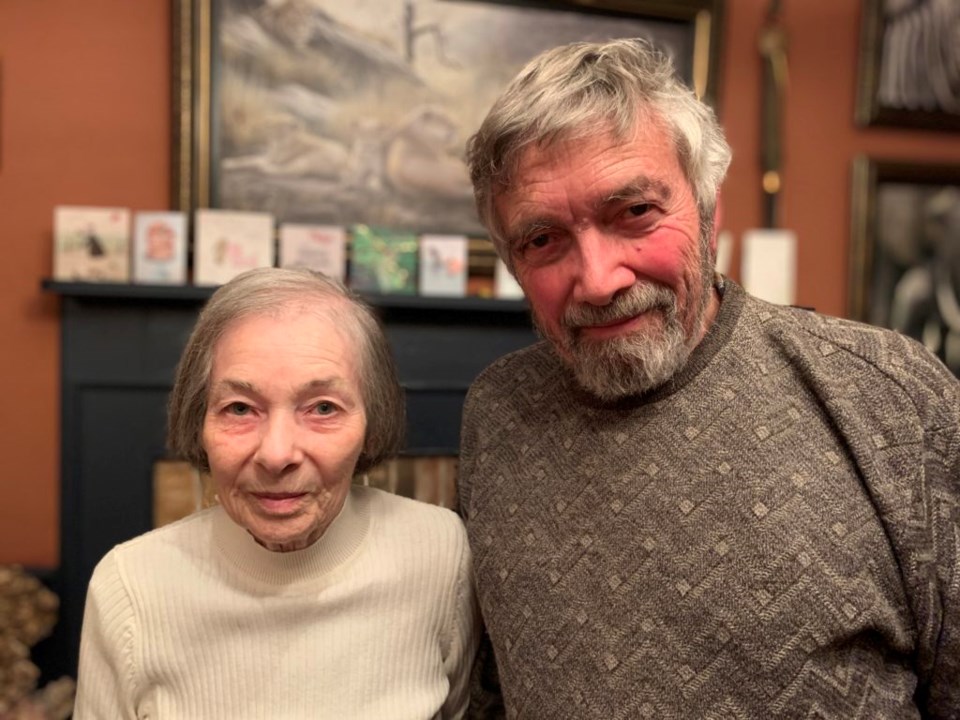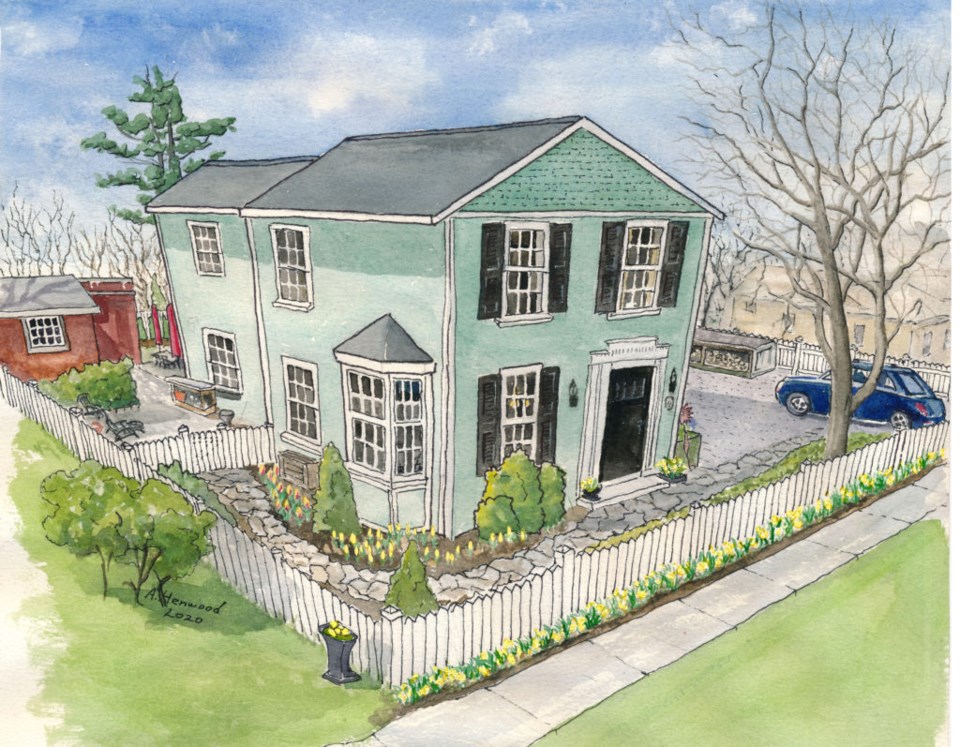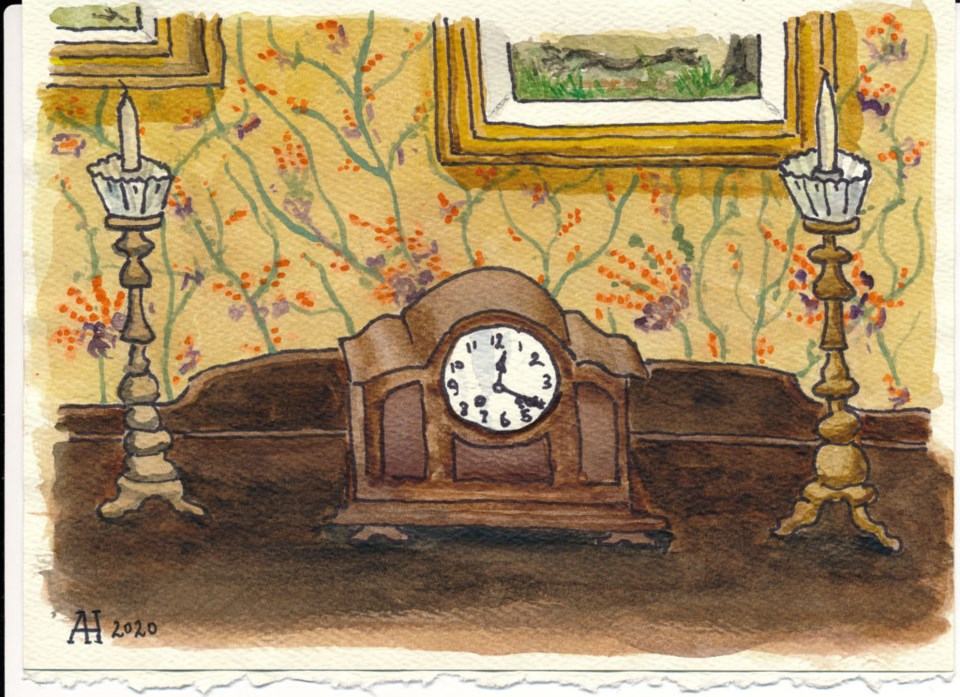
Andrew Henwood is feeling pretty optimistic. Grateful, even.
Most mornings he wakes up feeling happy, he says.
He is concerned for his wife’s health, and knows she isn’t happy — that weighs heavily on him, but he feels fortunate she’s safely tucked away at Upper Canada Lodge, receiving good care.
Self-isolating isn’t a problem, he says. At 81, he has enough to do around the house to keep him busy, including a significant project to improve his work shop, and a massive amount of outdoor work. “Gayle used to do the gardening, and I’d do the house maintenance. Now I’m trying to do it without her.”
He gets up at 6:15 a.m. and is totally exhausted when he quits at the end of the day, although always with a sense of accomplishment, he says.
He also has several hobbies he enjoys, including painting and wood-working, and family phone conversations with two daughters and grandchildren, living on different continents — one in Britain and the other in Switzerland.
“I’m pretty good at isolating,” he says. “I’m not a gregarious person. I’m not always good with people — I have a habit of saying the wrong thing.”
His one worry is Gayle, who has Alzheimer’s, and since October, has been in Upper Canada Lodge. She is unable to look after herself, requiring 24-hour care, and Andrew could no longer look after her. He brought a health-care worker into their Johnson Street home, but that didn’t work well for either of them, and he was happy when he was offered a spot for Gayle close to home.
Before the COVID-19 pandemic meant visitors were prohibited from long-term care homes, he had a daily routine that included visiting Gayle from about 9:30 a.m. until noon.
“I hadn’t been doing much painting, but I’ve taken up the brush again recently, doing little postcard-sized paintings to take to Gayle,” he says.
He’s reduced his grocery shopping to once a week, and is enjoying cooking and walks on the Commons.
When self-isolating and physical distancing began, he felt, “life is in hand. We are indeed fortunate.”
Once visiting at Upper Canada was no longer allowed, his routine included taking his regular long walks past the lodge, and stopping to wave at Gayle through a window. That is no longer allowed either — completely understandable, he says — and he is left with talking to her on FaceTime, although he has planted some flowers she can see from her room, and when he goes over to water them every couple of days, he can still wave.
She has been handling the lack of visits well, understanding the need for the lockdown, but she’s not happy where she is.
Gayle knows him, still remembers friends and family, and enjoys hearing about them, he says.
“Alzheimer’s is not a cookie-cutter thing,” he says. “Every patient is different.”
Gayle has difficulty conversing, yet she is fully aware, takes in everything, has her opinions and still has her memory, which some people find bewildering, says Henwood.
He is accustomed to her not saying much when they’re on the phone, and having to hold up the conversation from his end. He walks around the house showing her paintings, talking about them, showing her what he’s doing, and she reacts with smiles. Or he’ll show her photographs that one of their daughters has taken, and read her messages from the family.
However, he cannot help but worry. He sees signs she’s going downhill, “but there is absolutely nothing I can do about it.’
Gayle, he says, “is stoic, strong and courageous, but she’s very much alone, during much of the day and through the night. There is nothing I can do. And nothing they can do either,” he says.
Worse, he has no idea when it’s going to change, and when he’ll be able to visit — there is no end in sight regarding the opening of long-term care homes to visitors, no way of knowing when the light at the end of the tunnel will be reached.
He says when he first heard he would no longer be able to see Gayle, he understood it to be an obvious, necessary measure to keep residents safe. “I absolutely agree with all the measures they’re taking. I applaud them in every way — they’re doing everything right.”
But that doesn’t make it easy.
He recently put one of his postcard paintings in the mail for her. It’s of a clock that sits on the buffet in their dining room, with a loving note attached.
He knows she’s in the best place possible, he says, getting good care, and is “profoundly grateful she’s so close to home.”
He says he’s trying to take a lesson from Gayle, to be stoic and courageous as she is. “I’m determined to be strong for her.”
However, he feels they are both in need of a visit, of the personal, quiet companionship they’ve enjoyed in the past, and hope that isn’t in the too distant future.
“I’m confident I’ll one day be able to go out the door, visit her again from 9:30 to noon, and possibly go back to tuck her into bed at night. I know we’ll be fine.”
In the meantime, he says, “I’m surprised sometimes by how happy I am, under circumstances that are not ideal. It’s a good life.”

